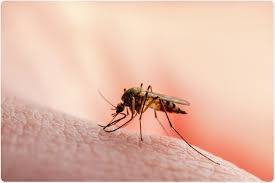Malaria is a mosquito-borne infectious disease caused by a parasite called Plasmodium. Here are 10 causes, effects, and solutions related to malaria:
**Causes:**
1. Mosquito Bites: Malaria is primarily transmitted through the bite of infected female Anopheles mosquitoes.
2. Travel to Endemic Areas: Traveling to regions where malaria is prevalent increases the risk of infection.
3. Lack of Protective Measures: Not using mosquito nets, insect repellent, or wearing protective clothing in endemic areas can lead to malaria transmission.
4. Resistance to Antimalarial Drugs: Drug-resistant strains of Plasmodium have emerged, making treatment less effective.
5. Stagnant Water: Mosquitoes breed in stagnant water, so areas with poor drainage contribute to mosquito proliferation.
6. Climate Change: Changes in climate patterns can expand the range of malaria-transmitting mosquitoes.
7. Lack of Healthcare Access: Limited access to healthcare facilities and diagnostic tests hinders early detection and treatment.
8. Poverty: People in impoverished areas often have inadequate housing and sanitation, making them more susceptible to malaria.
9. Population Movement: Migration can introduce malaria into new regions, leading to outbreaks.
10. Lack of Public Health Interventions: Insufficient vector control measures and healthcare infrastructure contribute to malaria prevalence.
**Effects:**
1. Fever and Chills: Malaria typically presents with high fevers and chills.
2. Anemia: Repeated malaria infections can lead to anemia, especially in children.
3. Organ Damage: Severe cases can result in organ damage, affecting the brain, kidneys, and liver.
4. Death: Malaria can be fatal, especially if left untreated or in cases of drug-resistant strains.
5. Impaired Cognitive Development: Malaria in children can lead to cognitive impairment and developmental delays.
6. Economic Burden: Malaria places a significant economic burden on affected countries due to healthcare costs and lost productivity.
7. School Absenteeism: Children often miss school due to illness, impacting their education.
8. Reduced Agricultural Productivity: Adults missing work due to malaria affects agricultural output in endemic areas.
9. Social Disruption: Malaria outbreaks can lead to social disruption and strain on healthcare systems.
10. Increased Poverty: Malaria perpetuates the cycle of poverty in affected regions.
**Solutions:**
1. Mosquito Control: Implement effective mosquito control measures such as insecticide-treated bed nets and indoor spraying.
2. Antimalarial Drugs: Ensure access to and proper use of antimalarial medications, with an emphasis on combating drug resistance.
3. Vaccination: Develop and distribute malaria vaccines to prevent infection.
4. Health Education: Raise awareness about malaria prevention, transmission, and treatment in affected communities.
5. Improve Healthcare Infrastructure: Strengthen healthcare systems to provide early diagnosis and treatment.
6. Research and Surveillance: Invest in research to better understand the parasite and monitor its spread.
7. Climate Change Mitigation: Address climate change to reduce the expansion of malaria transmission areas.
8. International Cooperation: Collaborate globally to combat malaria and provide funding for prevention and treatment programs.
9. Community Engagement: Involve local communities in malaria control efforts to ensure sustainability.
10. Poverty Reduction: Address poverty and improve living conditions in malaria-endemic areas to reduce vulnerability.
Combating malaria requires a multifaceted approach involving governments, international organizations, and local communities.


